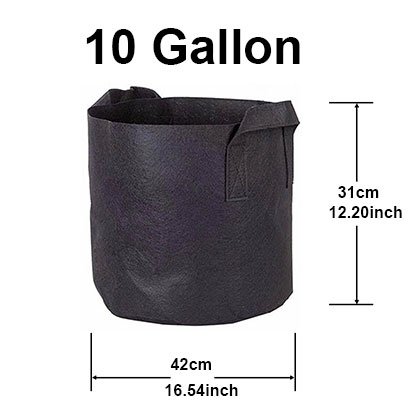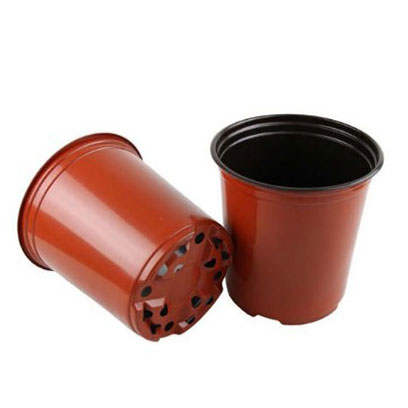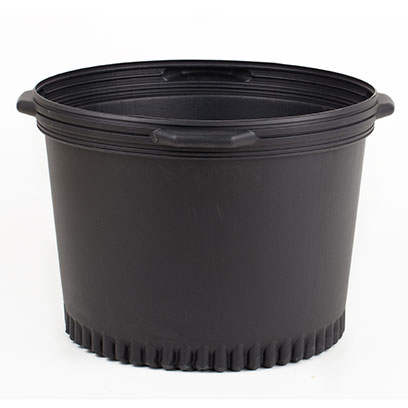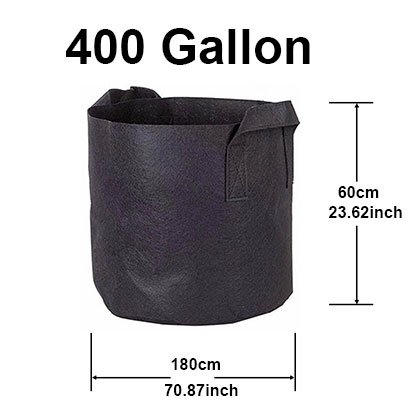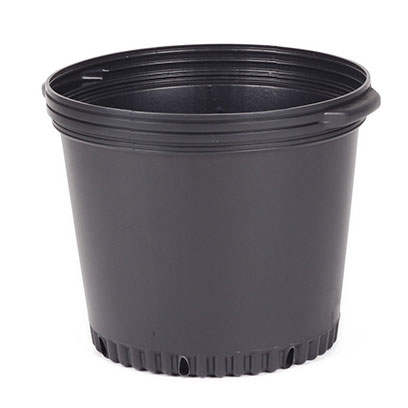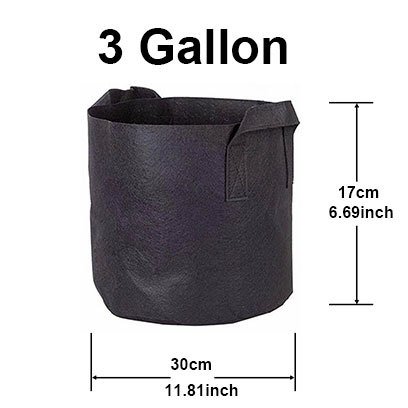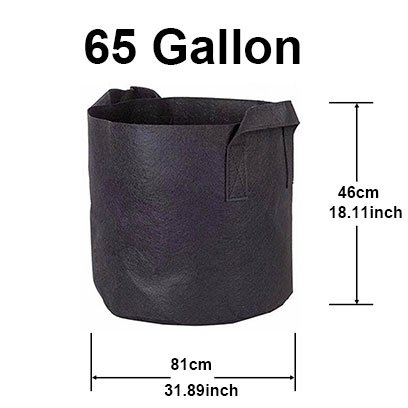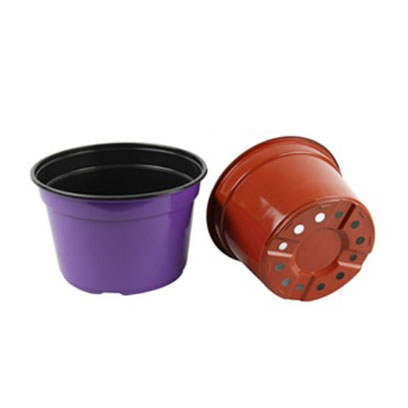Do fruit trees grow well in pots?
Yes, fruit tree can grow well in plastic plant pots, as long as the plastic plant pot is large enough for the mature size of the tree and has good drainage. You should also be careful with feeding and watering, as the roots of a potted tree can dry out quickly.
Cheap Fruit Tree Pots Wholesale MOQ:1000pcs! 19 Years Experience Fruit Tree Planters Supplier, 35,000m² Workshop Area, Factory Price, Free Samples!
If you want to buy fruit tree pots, please click our products: Plastic Gallon Pots or Fabric Plant Pots for more information!
What fruit trees are best grown in pots?
Citrus fruits, dwarf apples, plums and figs are among the best fruit trees to grow in containers. Opt for dwarf varieties that don't get too big. Remember that even dwarf fruit trees will need some pruning to keep them to a manageable size.
Which fruits can be grown at home in pots?
The fruit trees you can grow at home depend on your climate and growing conditions but many citrus fruits, apples and pears respond well to being grown in pots. Even if you live in a cold climate, you can still enjoy potted orange or lemon trees indoors during the winter months.
What type of pots are best for fruit trees?
A pot with drainage holes is essential for growing potted fruit trees so you don't end up over watering them and drowning their roots which could cause rot or pest problems like root mealy.
What size pots do you need for fruit trees?
If you're thinking about growing fruit trees in containers, there are a few things to consider before you get started. First and foremost, the most important thing is the size of your fruit tree planters—you need to have a pot large enough to accommodate the root system of your plant. Choose best pots for fruit trees that can provide enough space for the roots of your fruit tree.
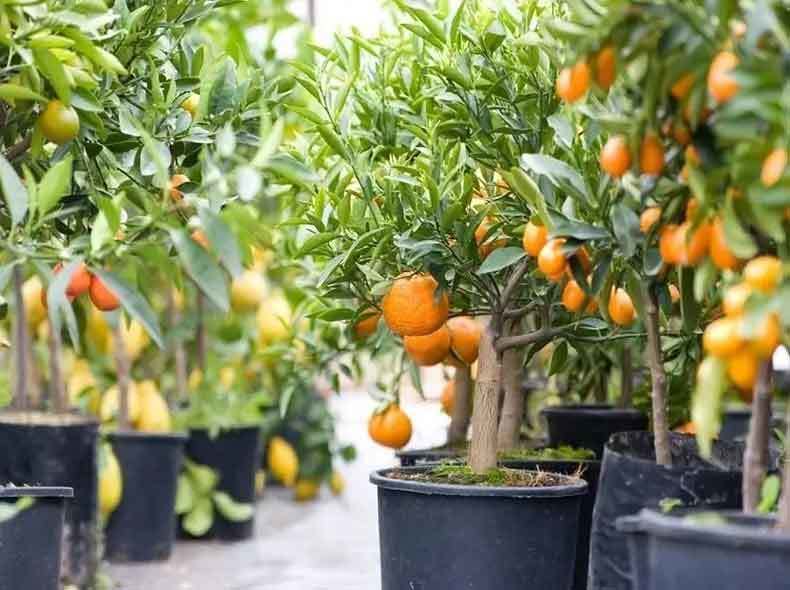
This can vary depending on the variety, the smallest acceptable size of fruit tree pots is 10 gallon pot (38 liters), which is sufficient for dwarf varieties up to around five years old. Most experts recommend at least 15 gallon (57 liters) and 15 gallon pots are typically large enough to accommodate young trees that are just starting out. Many use 20 gallon pot (76 liters) to 25 gallon pot (95 liters) or larger fabric pots — especially if they intend to keep their trees in pots long-term.
As your tree matures, you'll eventually want to move it into a pot that's at least 30 gallons in size, which should allow it space to grow until it's fully mature (generally between 3-5 years after planting). If you're starting with a full-grown tree, you'll want to look for something in between 30 and 45 gallons—although if you opt for a smaller pot when starting out, remember that you can always transplant the tree into something larger when it's grown.
What is the best soil for potted fruit trees?
Potting soil is a specially formulated mixture of ingredients designed to provide nutrients to fruit trees in pots. It's not recommended that you use regular garden soil because it may not have enough drainage properties, or it could be contaminated with diseases that could harm your fruit tree.
The best type of soil for a fruit tree in a pot is one that has excellent drainage. The soil should be able to hold moisture but also allow any excess moisture to drain out of the bottom of the fruit tree planters. A good soil mix is 50 percent regular potting soil, 25 percent expanded perlite and 25 percent peat moss.
What is the best fertilizer for fruit trees in pots?
There are many choices to consider when you're looking for the best fertilizer for fruit trees in pots. For example, you want to avoid fertilizers that contain too much nitrogen. Nitrogen encourages leaf growth, but it can be harmful to fruit trees, weakening them and making them more susceptible to disease.
You also want to be sure your fertilizer has available potassium, which helps with photosynthesis and water-use efficiency (both of which are crucial for optimal fruit production). Also important is calcium, which promotes root growth, as well as iron and magnesium, which are needed for chlorophyll production.
Fertilizing fruit trees in pots is very important to the health of the tree, but you don't want to overdo it or you could cause damage. I would recommend that you stick with organic fertilizers, if possible, because they're much safer for plants and will also improve the quality of your soil long-term. If you have access to manure from a farm, that's ideal because it will provide plenty of nutrients for your fruit tree.
In most cases, the best fertilizer for fruit trees in pots is a balanced fertilizer with equal amounts of nitrogen, phosphorus and potassium. This is commonly referred to as 10-10-10 fertilizer. You can use this at the beginning of springtime when new growth begins and then again near the end of summer when the fruits are ripening.
As an alternative, you can also use blood meal or bone meal as they are both good natural fertilizers that work well on fruit trees in pots. Just make sure not to apply them right before heavy rains as they may wash away before they have time to soak in.
How do you plant dwarf fruit trees in pots?
You can easily grow your own fruit trees in containers. Whether you're limited on space or just want to take your gardening to new heights, this is a fun and rewarding way to grow fruit. Dwarf varieties of apples, pears, peaches, plums and cherries are a good choice for fruit tree pots, but even citrus and figs can be grown in pots.
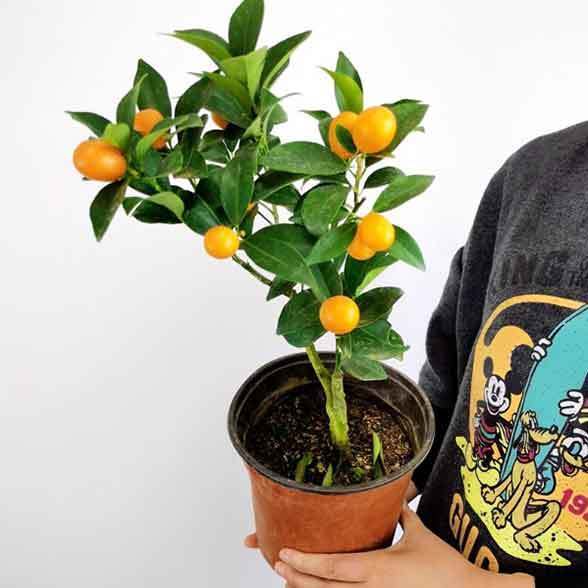
Here's how to get started:
Select a container that's at least 16 inches deep and 18 inches wide for dwarf trees. Spread a 2-inch layer of gravel in the bottom of the fruit tree pots to improve drainage. Place the tree in the center of the fruit plant pots on top of the gravel layer. Fill soil around the tree until it is just below the root ball. Tamp down soil firmly with your hands or feet to remove air pockets. Water thoroughly until water drains from holes in the bottom of the large pots for fruit trees.
How often should you water fruit trees in pots?
If you want to grow fruit trees in containers, you are going to have to water them. Fruit trees need a consistent source of water to thrive. While potted trees do not require as much water as those in the ground, they still need regular watering.
How often should you water a potted fruit tree? The frequency of watering depends on the size of the fruit tree pots and the type of soil in it. Watering once or twice a week is usually sufficient for most fruit trees grown in pots.
However, if the tree pot soil is sandy or there is no mulch on top, you will probably have to water more often. If your tree is in a large fruit tree planter, it may not need watering for several weeks after a moderate rain. Make sure your tree does not dry out between waterings, especially during hot weather or periods of heavy fruit development and growth.
How much should you water for fruit trees in pots? When watering, give the fruit tree pots enough water that it drains from the bottom; this will ensure that all parts of the root system get thoroughly hydrated. If possible, try to avoid overhead watering, which can lead to mildew and other problems with the leaves and fruit.
How do you fertilize fruit trees in pots?
How do you fertilize fruit trees in pots? You can use a slow-release fertilizer, or a liquid fertilizer. A slow release granular fertilizer is best, and will be the most convenient to use.
It's not too difficult to add fertilizer to potted trees when you water them. There are all kinds of liquid fertilizers available for houseplants, and these will also work for your fruit trees. A word of caution: if you don't dilute the liquid fertilizer enough (check the instructions), it may burn your tree's roots.
The key thing is to not overdo it with fertilizer. Applying too much nitrogen causes plants to grow lots of leaves and not much fruit, which is not what we want from our fruit trees!
How do you prune a potted tree?
The first step is to remove any dead, diseased or damaged branches. The next step is to determine the shape of your tree.
If it is an informal upright tree, you will make the top shorter than the bottom. On a formal upright tree, you will make the top and the bottom even. On a slanting tree, you will make the top longer than the bottom. On a cascade tree, you will make the top shorter than the bottom.
When you are cutting off branches, always cut back to another branch or trunk. Don't leave stubs or your tree will look disfigured and unbalanced. It is better to leave a little extra rather than cut too much off at once. You prune about one-fourth of the branches each year.
Are dwarf fruit trees self pollinating?
Dwarf fruit trees are not self pollinating. We recommend planting 2 different varieties for pollination. This will increase the size of the fruit and the amount of fruit that is produced. The most important factor for pollination is variety, followed by having a compatible flowering time.
How long does it take for dwarf fruit trees to bear fruit?
Generally, dwarf fruit trees will produce some fruit within a year or two of planting. Some may produce sooner, and some may take longer. Most mature dwarf apple trees will produce fruit in 2-5 years.
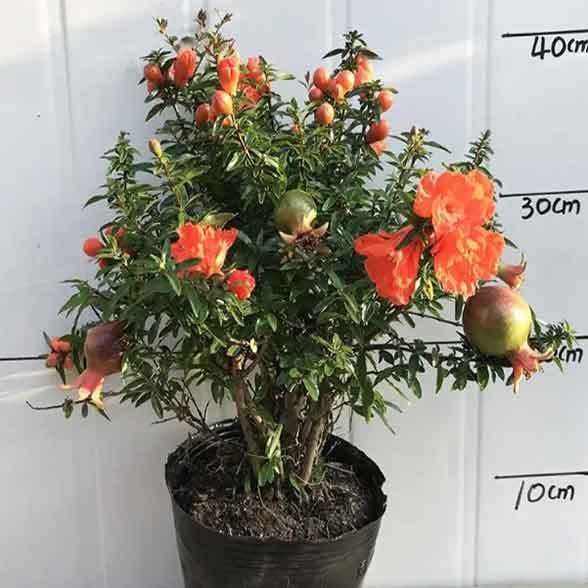
Dwarf peach trees usually begin producing within the first year or two after planting. The time it takes for a dwarf fruit tree to bear fruit depends on the age of the tree, the species of tree, and how well it is cared for.
The best way to encourage your dwarf fruit tree to produce is by providing it with proper care. Make sure to water regularly (especially during dry spells), fertilize every few weeks during spring, and be sure not to damage the trunk or roots when weeding or pruning.
How do you winterize a potted fruit tree?
If you live in a region where temperatures drop below freezing, you will need to winterize your potted fruit trees. This involves moving the tree indoors or insulating it for the winter. You may want to consider wrapping your tree with burlap or other material to protect it from frost. You should also prune back your fruit trees before moving them indoors to prevent any pests from coming inside with it.
If you can, try and get your fruit tree pots into a location that gets plenty of sunlight during the day but stays cool at night. If possible, move the potted fruit tree to an area where there are no windows that could let in cold drafts from outside. It may also help if you place the tree on a concrete floor rather than carpet so that cold air doesn't rise up through the potting soil and freeze the roots over time.
Are coffee grounds good for fruit trees?
Yes. Coffee grounds are a good source of nitrogen, potassium, and many other trace minerals, so applying them to plants can help give them a boost. Fresh coffee grounds are best for fruit trees, but there is no harm in using old ones.They may not have as much benefit as fresh ones, but they're still useful. Just be sure to let them dry out before tossing them around your tree.
The acidity of the grounds is also beneficial for fruit trees as it mimics their natural habitat—the soil below fallen fruits, leaves, and branches that have decomposed and will provide nutrients to the trees. They may be especially beneficial for acid-loving trees such as citrus, plum, cherry, peach and apple.
You can use coffee grounds to make compost. The best method is to pour a gallon of water into a bucket and add about two cups of coffee grounds. Stir the mixture to mix the coffee grinds with the water, then let it sit overnight so that the water becomes infused with nitrogen and other nutrients. The next day you can use it on your fruit trees by pouring around the base of each tree. Be careful not to get it on the leaves or stems as this will cause burning.
How long can fruit trees stay in pots?
If you pick the right tree for your climate, soil, and storage space, a fruit tree can stay in a pot for years. With proper care, trees will continue to produce fruit, and some trees (like citrus) will grow quite large before they need to be repotted into larger fruit tree planters or planted in the ground.
Some fruit trees can stay in pots for a long time. Many other kinds of fruit trees, including apples, peaches, and plums, can be grown in pots for two to three years with good results. As their root system expands and the crown grows larger, however, it becomes more difficult to keep them healthy unless you are willing to repot them into a larger fruit tree pot every year or two.






